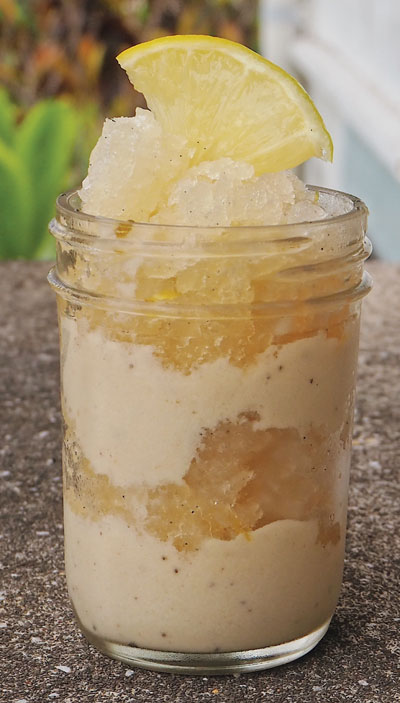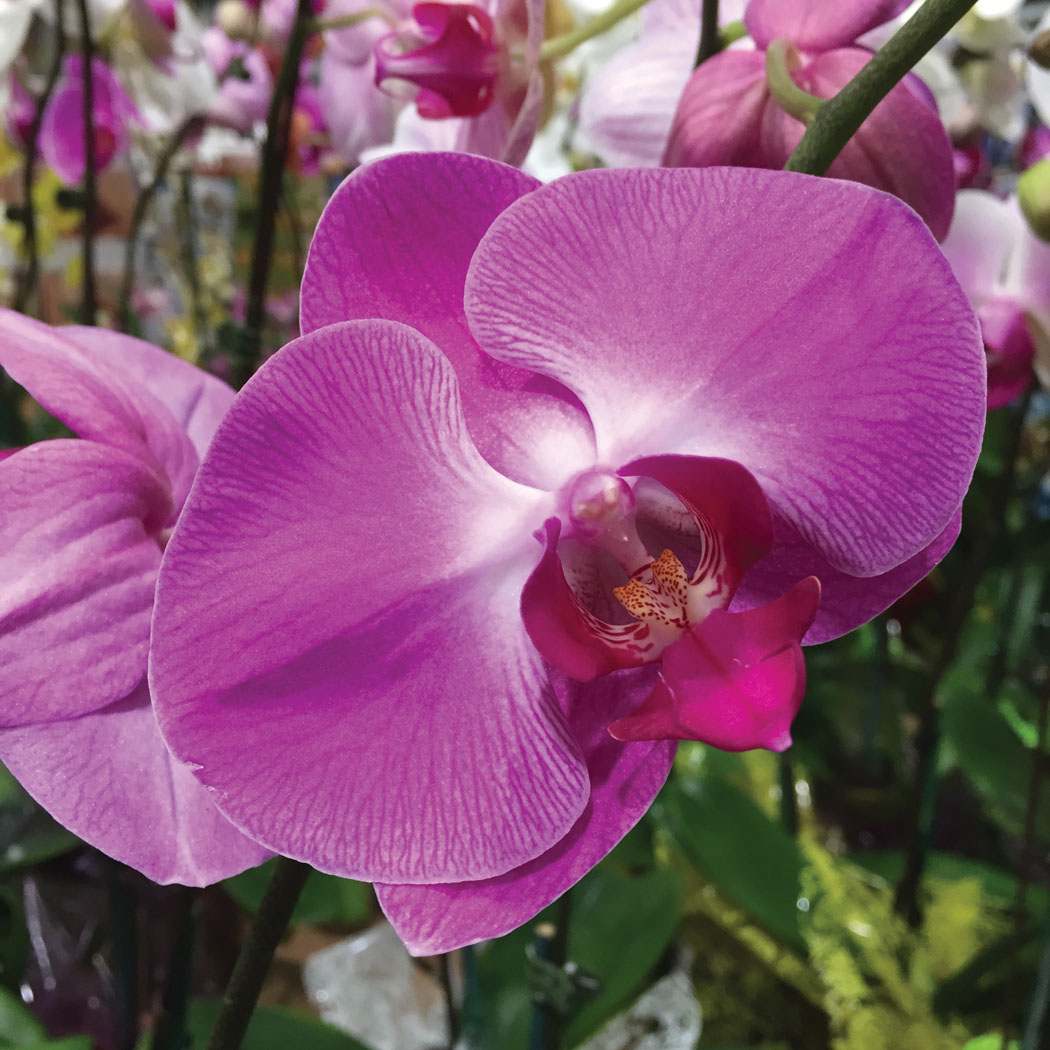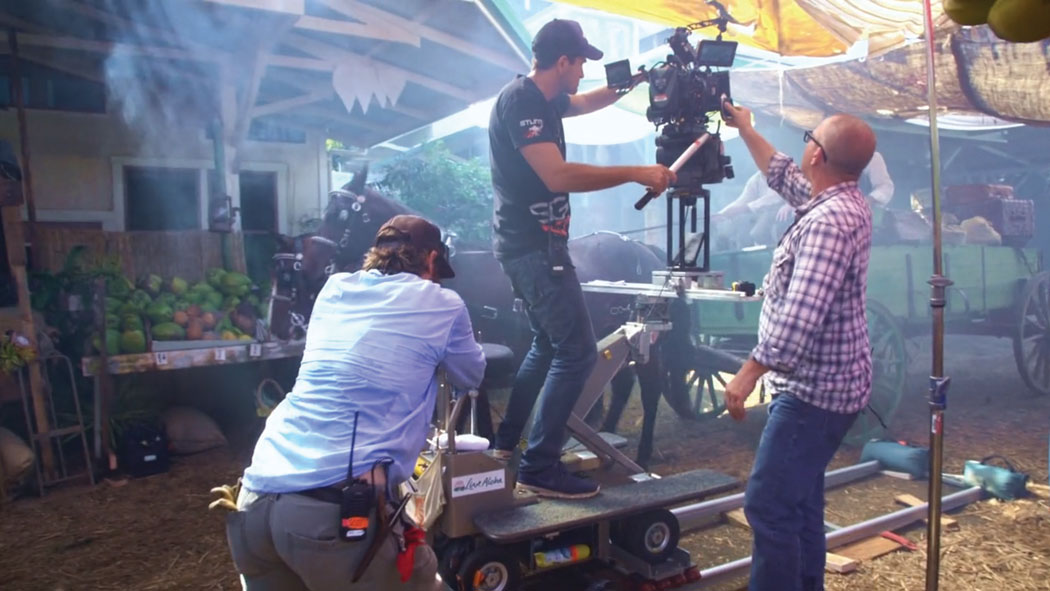
Heart and Memory: An Old Plantation Store Still Serves Community

By Catherine Tarleton
The 1930s were boom years for the sugarcane industry. Kohala Sugar Company, a giant consolidation of seven sugar mills in North Kohala (Kohala, Union, Niuli‘i, Hawi, Halawa, Hō‘ea, and Star) employed 600 people, and produced 45,000 tons of raw sugar from its 13,000 acres, irrigated by 23 miles of running water via the Kohala Ditch.

At the south end of Hawi, Kichigoro and Sei Fukada from Hiroshima, Japan, built the Fukada General Store—one of several in town. Its shelves were stacked with dry goods, snacks, sodas, sardines, and the vast myriad of things mom-and-pop shops are famous for. Fukada’s was also a tailor shop: bolts of fabric stacked on the shelves along one side of the room, reaching up toward the high ceilings. The large, one-room space had natural fir floors, a broad front porch, and a tiny outdoor lua (bathroom) in the back.
Many nissei (second-generation Japanese immigrants), whose parents came to Hawai‘i as imported plantation labor, were able to build on their parents’ sometimes backbreaking labor, open their own businesses, and prosper. Stores in the plantation communities were central hubs in their communities, places for folks to gather and talk story, catch up on the news and exchange information just about every day. It was this service, and the fond memories it generates, that endeared the general stores to their neighborhoods, and helps them endure across the islands today.
In Hawi, neighbors remember Mrs. Fukada sitting on the store’s porch, fussing at the keiki not to play in the street, while Mr. Fukada sold bentos in the back. An ad in the Kohala High School yearbook promoted “pure island honey, ice cakes and general merchandise.” Local kids would dig for soda bottles at the dump and trade them in for two cents each, trying to raise the quarter for a movie ticket. The hardworking couple lived in a house behind the store, and raised their family, who operated Fukada General Store for almost 40 years.
In 1971, a new owner “Route Van” Sugimoto—so called because he would deliver groceries around the area in a panel van—took over operation of Fukada General Store. In 1981, Sumi Kawasaki assumed operations, and ran the general store as Dawn’s Kohala, featuring aloha shirts, kids’ clothing and toys, along with the groceries. In 1996, new shopkeepers Warren and Maribel Vignato renamed the place Hawi General Store, although most everybody in town called it “the Filipino store,” because they sold Filipino food and other items. Hawi General Store also had the first faxing and copying services, and sold hula implements made by Ika Vea (who still runs his own shop in Kapa‘au).

In 2000, the building took on its first non-store role, as Island Community Lending, a realty and mortgage company. Its owner, Marcel Estes, allowed Kohala Mountain News to work in the space for a time. Then, in 2008, the building was available again.
Meanwhile, a new organization had been created in the area, the North Kohala Community Resource Center (NKCRC), founded and directed by Bob Martin, with the help of dedicated Kohala community volunteers Nani Svendsen, Bill Graham, Corey Causey, Gino Amar, Fran Woollard, Desiree Yamamoto, Dennis Matsuda, and Lani Bowman. Established as a nonprofit in 2002, NKCRC worked to help valuable community projects, large and small, find funding and accomplish their goals—with free training classes for partner projects, and a broad network of resources.
The board invited Christine Richardson to train as their executive director. At first, they leased a small space in the Kohala Village Inn. Then, in 2008, they leapt at the opportunity to rent the old Fukada General Store, still owned by Kichigoro and Sei’s great-grandson, Ray. “Ray’s mom Joyce Kobayashi really understood our mission,” says Christine. “She wanted a long-term tenant who cared about the community.”
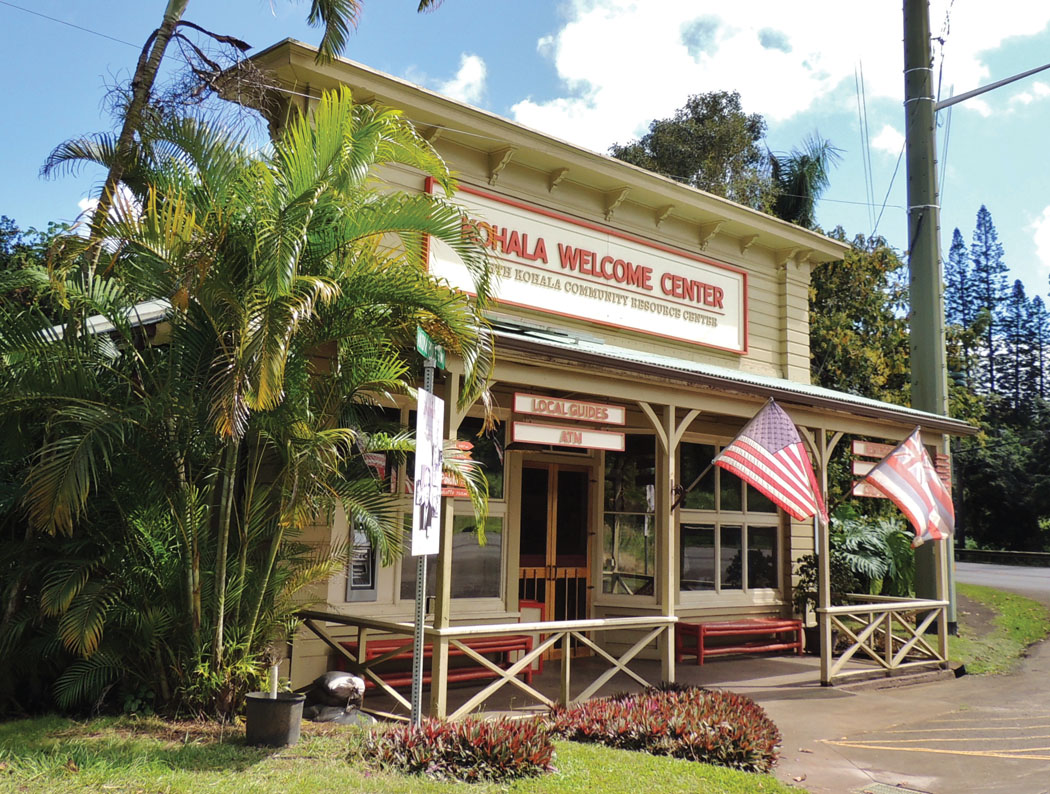
“When I unlocked the building, I happened to be with a museum curator from Canada,” Christine says. “She told me, ‘Never underestimate the value of community memory.’ I’ll always remember that.” Their early concept was to share that community memory with the 15,000 or more visitors per year who pass through town on their way to the King Kamehameha I statue, and the scenic overlook at Pololū. The fundraising process began, and in January, 2012 a new Welcome Center was blessed and opened, with office space for the nonprofit behind the displays.
NKCRC had canvassed the merchants in town to learn what visitors wanted most. There were two things: information and bathrooms. As a result, NKCRC built a new deck behind the storefront with two large, ADA accessible restrooms. The town’s tradespeople came out in force: carpenters, plumbers, roofers, electricians, and many others donating their time.
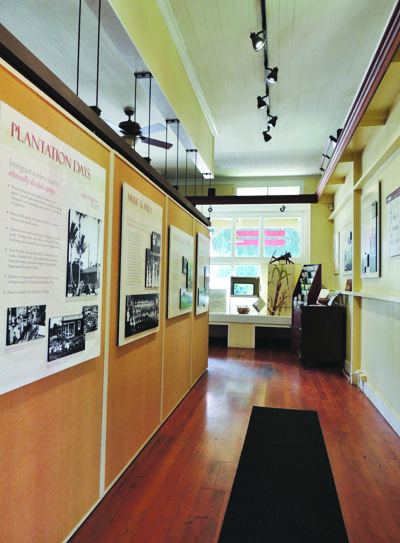
The Welcome Center provided maps and books about the region, CDs by local musicians, and trained guides who love and know the community well. They also began the process of telling Kohala’s story in a much deeper, richer way, through a series of eight large storyboards of 100 words each, carefully selected by the community.
The storyboards introduce Kohala from its volcanic origins, and as birthplace and boyhood home of King Kamehameha I. They illustrate the lineage of Hawai‘i’s monarchy and talk about the early missionaries who would eventually begin the sugar industry. Plantation life is featured prominently, as are the subsequent engineering marvels that are Kohala’s ditch and railroad systems. Other boards make the transition into emerging economies that followed the final harvest in 1975, and the Kohala of today.
Beautifully, “Music & Hula” has its own storyboard, honoring Kohala’s countless gifted musicians, songwriters, dancers, instrument makers, and others. These include storyteller/musician Clyde Halemaumau “Kindy” Sproat, slack key guitar master John Keawe, luthier David Gomes, and the multitalented Lim family, whose music may be playing as visitors tour the exhibit.
“Visitors are so grateful; they say thank you all the time,” says Christine. The Welcome Center presently has 10–12 trained guides volunteering about three-hour shifts each week. “You just have to love to talk to people and love the community,” Christine says.
One of those volunteers is retired schoolteacher Chris Brown. Like Christine, he came from the East Coast to work temporarily, and never left. Chris remembers meeting Mrs. Fukada and her family. “I had her son, daughter-in-law, and four grandchildren in my class over the years,” he says. He became interested in the Center when his daughter started a travel project for kids, assisted by NKCRC. “We currently have 85 projects,” says Christine. “Over our lifetime, 180 projects.” What’s a project? Pick a letter. Everything from Affordable Housing and Aikido to WasteStream Recycling is on the list.
“We have projects for youth, after school and in school,” says Christine. “4-H, ‘Ride Wild’ that teaches how to ride and rodeo skills. There’s Kohala Unupa‘a-Strong Foundation, Hawai‘i Wildlife Center, taking care of native birds…Mālama Kohala Kahakai Coastal Preservation [two women preserving more than 400 acres of open space land on the coast]. We have the three-and-a-half year old KNKR radio seven days a week. Of course, the Kamehameha Day committee, which organizes the annual celebration on June 11th. Also, the Kamehameha Statue Maintenance, which completed a full restoration of the statue last fall. It took two years to raise the money, $50,000 to strip and repaint. And thanks to the relationship with [former Hawai‘i State Representative] Cindy Evans, it is now supported in part by the State Foundation for Culture and the Arts, forever committed to contributing to the cost of care.”
What the Building Looks Like Today
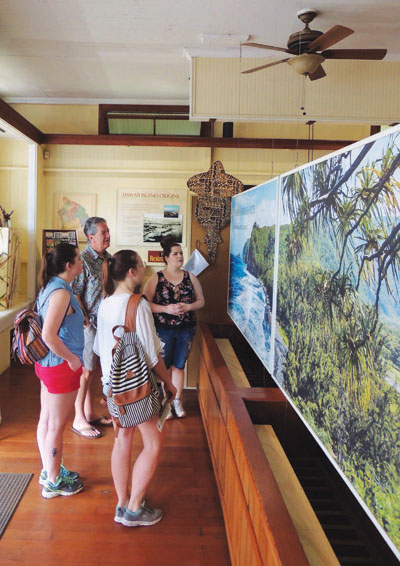
Except for new signs, fresh paint, and a deck in the back, the building’s exterior is very similar to its 1930s original. The old lua was recently a roost for one mother hen and her chicks. Inside, the space still has its traditional storefront, complete with an old-fashioned safe (now used to collect donations), high ceilings, and wood floors. The original shelves line one wall. An ingenious ceiling track design allows partitions to be slid aside to open the room up to its original space for special events. “We’ve restored the building, but kept the footprint, kept its heart and memory intact,” says Christine.
From the traditional town hub that was the general store, to today’s umbrella nonprofit for a growing network of good works, this old building is very much alive and well, doing its job today as it has for the last nine decades. ❖
North Kohala Community Resource Center is open Monday through Thursday, 9am to 4pm and Friday until 1pm, and is located at 55-3393 Akoni Pule Highway in Hawi.
For more information: northkohala.org
Mahalo Clark Realty—Home/Building Story Sponsor
